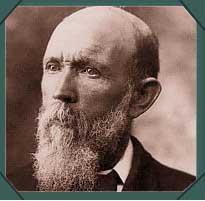Andrew Fisher, past prime minster of Australia, symbolised the powerful political influence exercised by the mining fields and miners on that country’s growth as a democratic nation.
Andrew Fisher was three times prime minister of Australia. He led the nation at the time of Gallipoli landing. He had also been a minister in the first Queensland Labor Government (1899) and the first federal Labor government (1904). By occupation he was a coal miner, then a gold miner and finally a mine engine driver. He symbolised the powerful political influence exercised by the mining fields and miners on Australia’s growth as a democratic nation. Significantly his government began the transcontinental railway, so vital to Western Australian and its eastern goldfields.
Andrew Fisher was Prime Minister of Australia in a period when a wide variety of national institutions and policies were being shaped. He was personally respected on all sides of politics.
























 John Campbell Miles (1883 – 1965) was the prospector and pastoral worker who discovered the mineralisation upon which the famous Mt Isa Mine was established in Queensland.
John Campbell Miles (1883 – 1965) was the prospector and pastoral worker who discovered the mineralisation upon which the famous Mt Isa Mine was established in Queensland. Patrick (Paddy) Hannan (1843 – 1925) was one of the prospectors whose discovery of gold in 1893 paved the way to mining in Kalgoorlie-Boulder, Western Australia.
Patrick (Paddy) Hannan (1843 – 1925) was one of the prospectors whose discovery of gold in 1893 paved the way to mining in Kalgoorlie-Boulder, Western Australia.